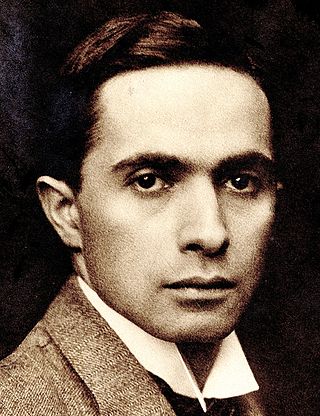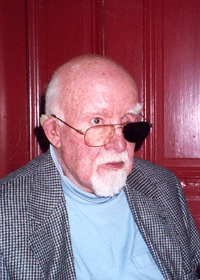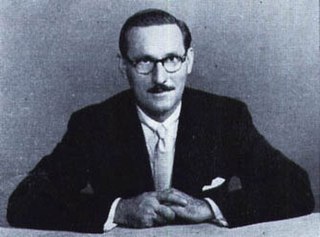Related Research Articles

Jugendstil was an artistic movement, particularly in the decorative arts, that was influential primarily in Germany and elsewhere in Europe to a lesser extent from about 1895 until about 1910. It was the German counterpart of Art Nouveau. The members of the movement were reacting against the historicism and neo-classicism of the official art and architecture academies. It took its name from the art journal Jugend, founded by the German artist Georg Hirth. It was especially active in the graphic arts and interior decoration.

Faizal Fatumah

Yoshitaka Amano is a Japanese visual artist, character designer, illustrator, a scenic designer for theatre and film, and a costume designer. He first came into prominence in the late 1960s working on the anime adaptation of Speed Racer. Amano later became the creator of iconic and influential characters such as Gatchaman, Tekkaman, Honeybee Hutch, and Casshern. In 1982 he went independent and became a freelance artist, finding success as an illustrator for numerous authors, and worked on best-selling novel series, such as The Guin Saga and Vampire Hunter D. He is also known for his commissioned illustrations for the popular video game franchise Final Fantasy.

Roy Gerald Krenkel, who often signed his work RGK, was an American illustrator who specialized in fantasy and historical drawings and paintings for books, magazines and comic books.

John Carl Schoenherr was an American illustrator. He won the 1988 Caldecott Medal for U.S. children's book illustration, recognizing Owl Moon by Jane Yolen, which recounts the story of the first time a father takes his youngest child on a traditional outing to spot an owl. He was posthumously inducted into the Science Fiction and Fantasy Hall of Fame in 2015.

Arthur Burdett Frost, usually cited as A. B. Frost, was an American illustrator, graphic artist, painter and comics writer. He is best known for his illustrations of Brer Rabbit and other characters in the Joel Chandler Harris' Uncle Remus books.

Rafał Olbinski is a Polish illustrator, painter, and educator, living in the United States. He is considered one of the major representatives of the Polish School of Posters.

Joseph Christian Leyendecker was one of the most prominent and financially successful freelance commercial artists in the U.S. He was active between 1895 and 1951 producing drawings and paintings for hundreds of posters, books, advertisements, and magazine covers and stories. He is best known for his 80 covers for Collier's Weekly, 322 covers for The Saturday Evening Post, and advertising illustrations for B. Kuppenheimer men's clothing and Arrow brand shirts and detachable collars. He was one of the few known reportedly gay artists working in the early-twentieth century U.S.

Stevan Dohanos was an American artist and illustrator of the social realism school, best known for his Saturday Evening Post covers, and responsible for several of the Don't Talk set of World War II propaganda posters. He named Grant Wood and Edward Hopper as the greatest influences on his painting.

Jack Banham Coggins was an artist, author, and illustrator. He is known in the United States for his oil paintings, which focused predominantly on marine subjects. He is also known for his books on space travel, which were both authored and illustrated by Coggins. Besides his own works, Coggins also provided illustrations for advertisements and magazine covers and articles.

Al Parker (1906–1985) was an American artist and illustrator.

Basil Gogos was an Egyptian-American illustrator best known for his portraits of movie monsters which appeared on the covers of Famous Monsters of Filmland magazine in the 1960s and 1970s.
Brad Holland is an American artist. His work has appeared in Time, Vanity Fair, The New Yorker, Playboy, Rolling Stone, The New York Times, and many other national and international publications. His paintings have been exhibited in museums around the world, including one-man exhibitions at the Musée des Beaux-Arts, Clermont-Ferrand, France and the Museum of American Illustration, New York City.

John Philip Falter was an American artist best known for his many cover paintings for The Saturday Evening Post.

Constantinos "Ted" CoConis was an American illustrator and painter who worked on many children's books, including the 1971 Newbery Award-winning The Summer of the Swans by Betsy Cromer Byars, and The Golden God, Apollo by Doris Gates. He is the creator of well-known movie posters, book covers, and magazine and story illustrations, for which he was inducted into the Society of Illustrators' Hall of Fame. In 1980, he left the world of illustration to pursue a career as a fine artist.
Anita E. Kunz, OC, DFA, RCA is a Canadian-born artist and illustrator. She was the first woman and first Canadian to have a solo exhibit at the Library of Congress in Washington, D.C.
Tim O'Brien is an American artist who works in a realistic style. His illustrations have appeared on the covers and interior pages of magazines such as Time, Rolling Stone, GQ, Esquire, National Geographic, Der Spiegel, and others. His illustrations are also used by the US Postal Service for postage stamps.

Floyd MacMillan Davis was an American painter and illustrator known for his work in advertising and illustration; Walter and Roger Reed described him as "someone who could capture the rich, beautiful people of the 1920s: dashing, mustachioed men; the cool, svelte women. But Davis was just as capable at capturing just-plain-folk, and with a cartoonist's sensibilities and a fresh humor, he expanded into story art and ad work that called characters of every persuasion.
Sidney Harry Riesenberg was an illustrator and artist who lived in Yonkers, New York. He was known as a professional illustrator for his posters for the United States Marine Corps and the Liberty bond programs, for his illustrations for book covers, magazines, and for oil paintings of diverse subjects. He retired from his professional work and dedicated his full-time energy to painting fine arts and teaching. In 1937 he began spending summers in Rockport, Massachusetts, where he painted scenes of the small fishing town. He was active in the Rockport Art Association, teaching oil painting and participating in water color figure painting classes.
Charles Edward Chambers was an American illustrator and classical painter. He is most-known for his Chesterfield cigarettes advertisements and Steinway & Sons portraits that ran during the early 1900s. Chambers also illustrated stories for writers W. Somerset Maugham and Pearl S. Buck, among others. These appeared in various magazines including, Cosmopolitan, Harper's, and Redbook.
References
- ↑ Knoll, Armin. "Interview Michael Sowa - AID Berlin - Akademie für Illustration und Design". www.aidberlin.de (in German). Retrieved 2020-06-06.